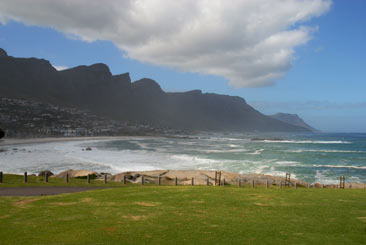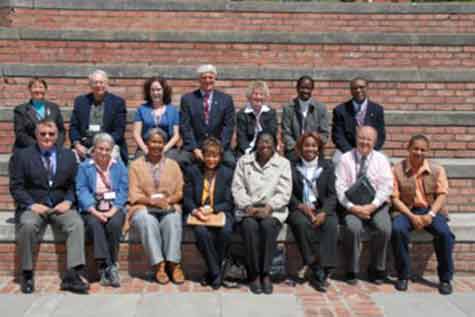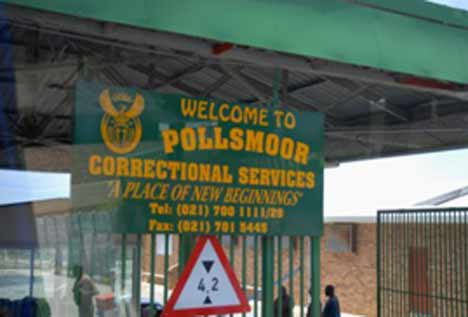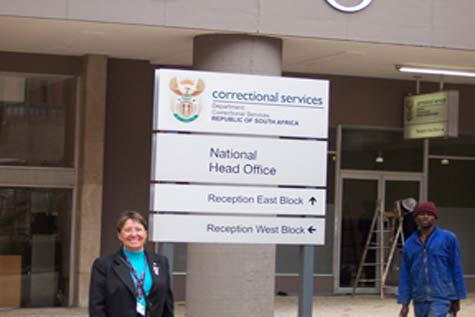|
|
| Inside Africa |
| By Adriane P. Reesey, Broward Sheriffs Office, Department of Law Enforcement Administration |
| Published: 05/05/2008 |
 Editor’s note: Through the People to People Ambassador program, Adriane Reesey and a delegation of other U.S. corrections practitioners journeyed to South Africa to discover how the country’s corrections system worked. This week and next, Reesey discusses what she and her counterparts found.
Editor’s note: Through the People to People Ambassador program, Adriane Reesey and a delegation of other U.S. corrections practitioners journeyed to South Africa to discover how the country’s corrections system worked. This week and next, Reesey discusses what she and her counterparts found. In 1956, Dwight D. Eisenhower, the 34th President of the United States, established a program to promote international understanding and friendship among different countries and diverse cultures. The purpose of the program was to open the lines of communication through the exchange of ideas and experiences. The mission of the People to People Programs (1) developed around a concept where citizens of different nations would meet and share experiences firsthand. In conjunction with the People to People Professional Ambassador Program(2), a professional corrections delegation, comprising wardens, psychiatrists, and educators from across the United States traveled to South Africa in November 2007. The goal of the visit was to share in an open dialogue regarding the two countries’ respective corrections systems. South Africa was selected because many of the issues that the country is experiencing, with unemployment rates at 40 percent, HIV/AIDS, overcrowding, poverty, the chasm between the classes, and the reentry efforts conducted by the National Institute for Crime Prevention and Rehabilitation of Offenders (NICRO)(3), are very similar to the issues experienced by the United States; however, South Africa’s issues are on a much larger scale. The stark contrasts of beauty and brutality are evident throughout the country and in every aspect of its history and culture. By meeting with corrections ministers, legal aid representatives, police, and reentry professionals, the delegation hoped to learn some innovative strategies for handling these situations. The ensuing discussions at the respective departments were truly open and frank. The lessons learned from the discussions were as dichotomous as the country itself in that South Africa is a country that looks ahead to what can be, sometimes with the inability to address what is. The corrections system in South Africa reflects the dichotomy in both its plans as well as in its current implementation concerning classification, housing, rehabilitation, and reentry approaches.(4)  U.S. Corrections Delegation FRONT ROW (left to right): Dr. William W. Sondervan (University of Maryland), Mrs. Laurie Shipley (Guest), Sharon Swan (Executive Director Transitional Living Center MA01 Bermuda), Virginia Washington (President CEO of VW Associates), Pauletta Williams (North Carolina Department of Corrections), G. Granger (New Jersey Department of Corrections), Mr. Bill Irwin (Pelican Bay Prison), Mr. Leonard Martinis (Director of the Chrysalis Academy) BACK ROW (Left to Right): Dr. Adriane Reesey (Broward County Sheriffs Office), Dr. Glen Shipley (Pelican Bay Psychiatrist), Dr. Mary Clair (Brown University), Dr. Ed Kropp (University of Virginia), Dr. Cynthia Corkern (Jackson County Mississippi Sheriffs Department Jackson Public Schools), Warden Lori Ricks (Connecticut Department of Correction, Hartford Correctional Center), Mr. Roy Chaney (California State Parole Administrator) The country’s court system is broken down into three distinct courts. According to Emile Viviers,(5) an attorney with the Molefe Roux law firm, located in Pretoria, the Magistrates’ and District Courts oversee less serious offenses, such as shoplifting, assault, or violations of municipal law. Offenders can be sentenced to up to three years with a 100 ZAR, or $16 (U.S.) fine. The Regional Court is representative of a larger geographic area and generally hears offenses such as robbery, carjacking, and murder. The High Court has jurisdiction over all matters in their geographical area, but it usually only hears civil matters involving more than 100,000 ZAR and serious criminal cases. There is no jurisdictional limit, with nine jurisdictions presently in place and dealing with most of what would be considered felony cases.(6) Offenders can receive life imprisonment and up to 500,000 ZAR, or $83,000 (U.S.) in fines. There is no longer a death penalty in South Africa, and a sentence of “life” usually means 25 years without parole. South African law also has put in place the Minimum Sentencing Act,(7) mandating guidelines to the court for use in sentencing to dissuade unreasonable time limits or restrictions being placed upon offenders. Additionally, it appears that the current law does not include some prevalent issues dealing with anal rape. At present, no laws address the issue, and anal rape is still viewed and prosecuted as an “assault.” (8) Rape, specifically prison rape, remains an issue in the prisons, as does the spread of HIV/AIDS.  Pollsmoor Prison, located outside Cape Town The South African court system does not offer consecutive sentences, and all sentencing must run concurrently. A number of “life” sentences are handed down in cases where an extremely egregious or heinous crime has taken place, but the offenders are still eligible for parole after 25 years. (9) The Truth and Reconciliation Commission (TRC), (10) not considered a formal court, was established to address apartheid-related political crimes, that is, gross and severe violations related to human rights. Amnesty, reparation, and rehabilitation are the core components for the TRC. The South African Correctional System, or Department of Correctional Services (DCS), has experienced changes because of the African National Congress (ANC), a political power that came into office after apartheid’s ascendancy to authority in the 1990s. The ensuing transition provided for an increase in violence from the tumultuous change after the apartheid regime. The DCS has been dealt numerous challenges in its attempts to transcend from the apartheid system of control to a more modern correctional system. (11)  Reesey at DCS headquarters The purpose of the correctional system is to contribute to maintaining and protecting that society, by enforcing the sentences handed down from the courts as prescribed, ensuring the offenders’ safe custody, while, at the same time, ensuring their human dignity. The system also has the mandate to promote the social responsibility and human development of all prisoners and persons subject to the community corrections programming. (12) In order to create the new South African standards for human incarceration under the new regime, the Correctional Services Act 111 of 1998 (13) was established. The document is considered liberal and was clearly drafted to “protect a just, peaceful, and safe society.” Editor's note: In Part two next week, Reesey discusses the DCS’s 20-year vision and how it is working toward those goals. Adriane P. Reesey works in the Department of Law Enforcement Administration, Community Involvement Division at the Broward County Sheriffs Office in Florida. End Notes: 1. Eisenhower, M. J. 2007. People to people citizen ambassador programs. Available at http://www.ambassadorprograms.org/about.aspx. People to people program. n.d. Available at http://www.eisenhower.utexas. Edu/dl/People_To_People/People_to_People.html. 2. Eisenhower, M. J. 2007. 3. Viviers, E. 2007. Presentation on the South African Justice System: Overview and case discussion, 9 November in Johannesburg, South Africa. To learn more, visit http://www.moleferoux.co.za/index.php? option=com_ frontpage&Itemid=1. 4.Dissel. A. 2007. PowerPoint Presentation on Integrated Youth Offender Project. Three-year evaluation report, 2004-2006: Inkanyezi Initiative, August 2007. Centre for the Study of Violence and Reconciliation, 7 November in Johannesburg, South Africa. 5. Viviers, E. 2007. Molefe Roux. Attorneys at law. (n.d.) Available at http: www.moleferoux.co.za/index.php?option=com_frontpage&Itemid=1 6. Viviers, E. 2007. Redpath, J. 2003. The courts in South Africa. Available at http://www.capegateway.gov.za/eng/pubs/public_info/C/32303/. 7.Viviers, E. 2007. Redpath, J. 2003. 8.Viviers, E. 2007. 9. Rennsburg, I., F. Lewis and J. Solomon. 2007. Presentation on the Western Cape Justice Centre and legal representation of cases. 12 November in Cape Town, South Africa. To learn more, visit http://www.legal-aid.co.za/index.php. 10. Redpath, J. 2003. 11. Dissel, A. 2007. 12. Nomatamsanqa, S. 2007. PowerPoint Presentation on international governmental relations, 8 November in Johannesburg, South Africa. Kunene, S. J. 2007. PowerPoint Presentation on Department of Correctional Services social reintegration and DCS mandate, 8 November in Johannesburg, South Africa. To learn more, visit http://www.info.gov.za/ whitepapers/2004/corrections.pdf. 13. South African government information. 2007. Correctional services. Available at http://www.info.gov.za/documents/subjectdocs/subject/correct.htm. |



I am presently in S. Afrrca and will be working on a project for Prisons with local NGO's. Is there an e-mail available for the author to get more information. Fran